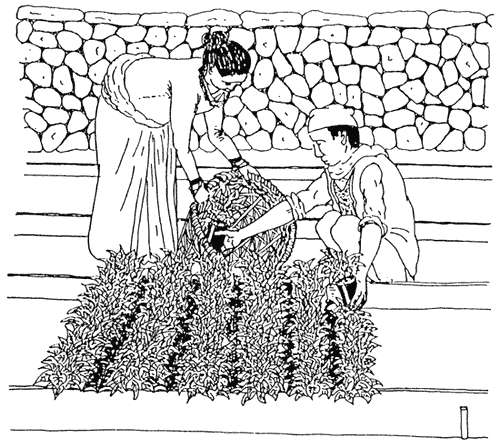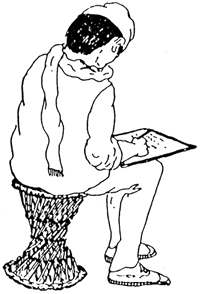 | 1. SOILS AND POT MIXTURES FOR NURSERIES |
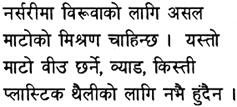 | It is very important to use a good soil in forest nurseries. This is important for seed trays, seed beds and poly pots. |
 | A good soil for nurseries should neither have too much clay in it nor too much sand. |
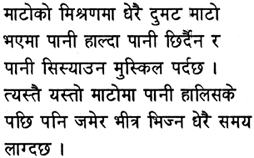 | If there is too much clay the soil will be difficult to water, water will take a long time to enter the soil. However, if a clayey soil gets waterlogged it will also take a long time to drain dry. |
 | If there is too much sand in the soil it will not hold enough water for the seedlings to grow properly and it will get too hot in strong sun. |
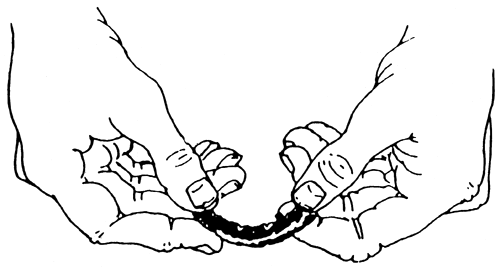
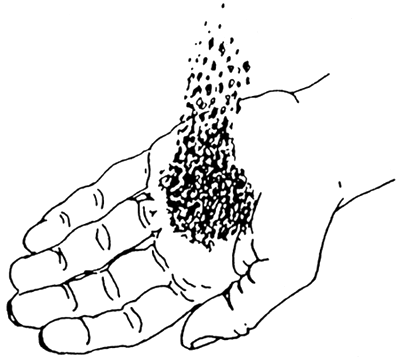
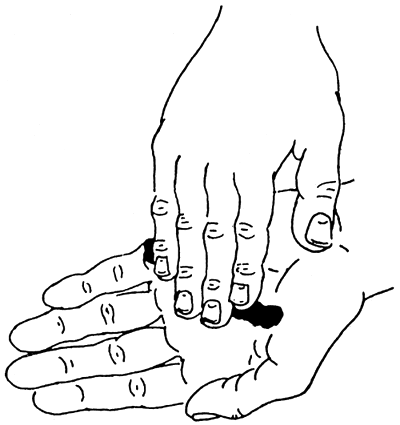
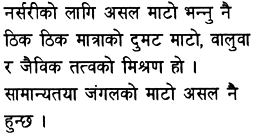 | A good soil for nurseries is the correct mixture of sand, clay and organic matter. Top soil from a forest is usually a good soil. |
 | To see if a soil is good try and roll it into a pencil sized roll. (The soil should be damp but not wet.) |
 | If it falls to pieces before you can roll it, it has too much sand in it. |
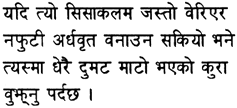 | If you can bend it into a semicircle without breaking it then there is too much clay in the soil. |
| A good soil should form a roll but break if the roll is bent. |
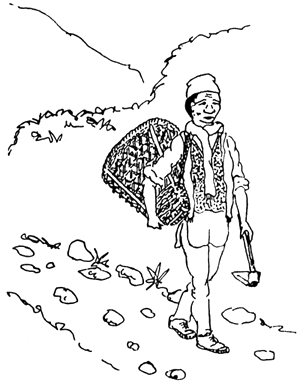
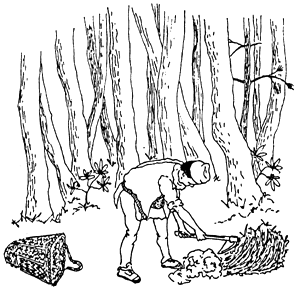
 | 1.1 FOREST TOP SOIL |
 | You can make a poor soil better by mixing in different amounts of sand and compost with forest top soil. |
 | Forest top soil should be collected during the dry season … |
 | First clear away the vegetation … |
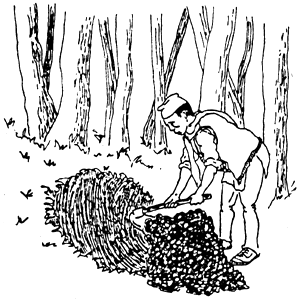
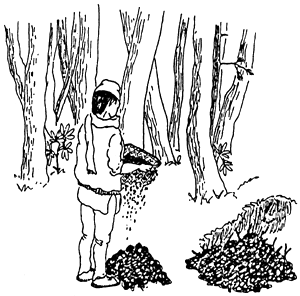

 | Dig out the top soil only - this can be up to 30 cm deep. |
 | Pass the soil through a sieve with large 1–2 cm sized holes to remove large roots and stones....... a phorsal makes a good sieve. |
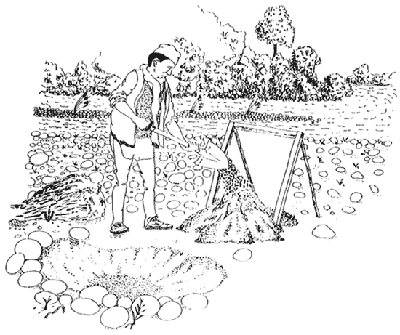
 | 1.2 SAND |
 | Sand can be collected from river banks. |
 | Dig out the sand and pass it through a fine sieve. |
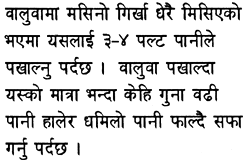 | If the sand has a lot of fine grit in it, it should be washed 3 to 4 times in several times its own amount of water. Pour away the dirty water each time. |
 | 1.3 COMPOST |
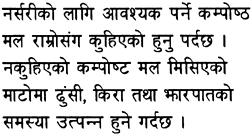 | Compost for nurseries must be very well rotted otherwise it will use up the goodness in the soil and may cause problems with fungi, insects and weeds. |
 | If the compost rots well it will heat up and kill any fungi, insects or weed seeds in it. |
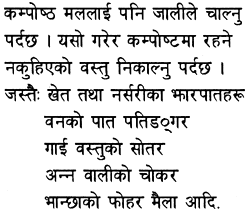 | Any type of vegetable matter can be used to make compost: |
Weeds from the nursery or fields, forest litter, animal bedding, crop residues, kitchen waste. |
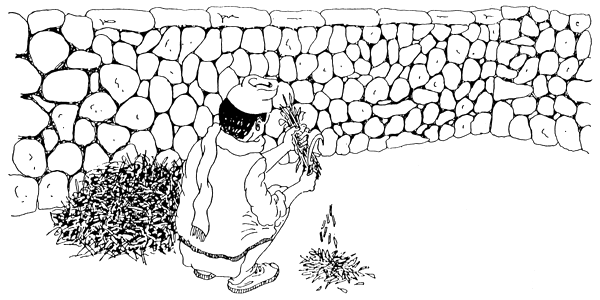
 | Green material rots faster than dried matter and larger pieces should be chopped up into 10–15 cm pieces so that they rot faster. |
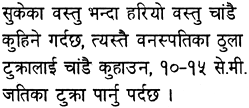 | It is best to make compost in a heap rather than in a pit because in the monsoon pits can fill with water and if the compost gets too wet it will not rot. |
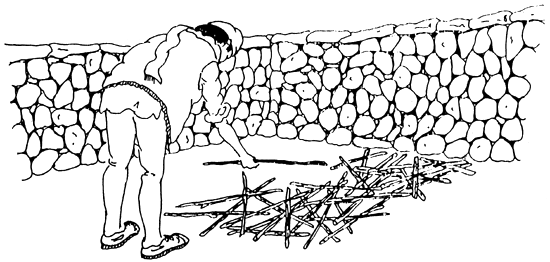
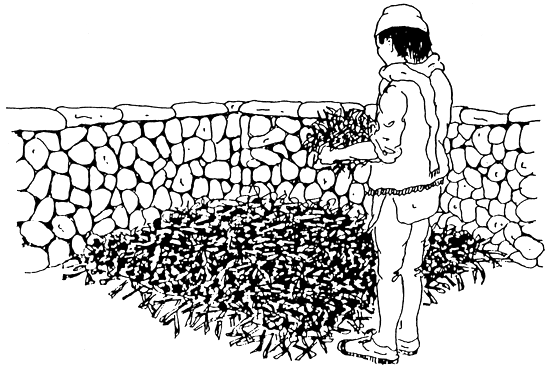
 | 1.3.1 MAKING COMPOST |
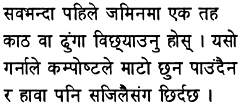 | First put down a layer of sticks or stones to keep the compost off the ground and let air into it.… |
 | Then build up layers of different types of materials, as they become available. If different materials are mixed together in the heap they rot more quickly...... |
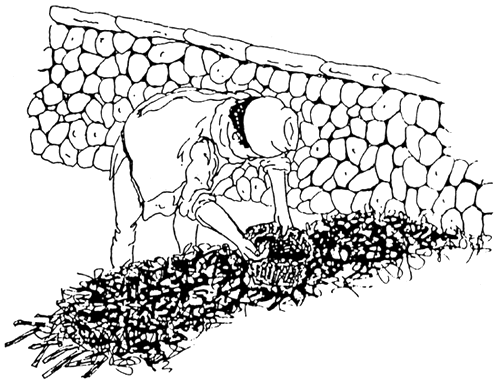

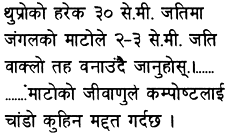 | Every 30 cm or so put a thin layer (2–3 cm) of good forest top soil on the heap...... ...... The microbes in the soil will make the compost rot more quickly. |
 | At the same time you can sprinkle the heap with liquid manure or diluted urine which also helps the compost rot more quickly. |
 | Cover the heap with black plastic sheeting to keep out the rain and to help it heat up. Or you can build a shelter over the heap. |
 | Once you have built one heap up to 1.5–2 m high don't keep adding to it but build another one instead. |
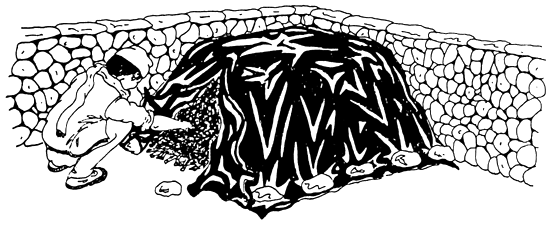
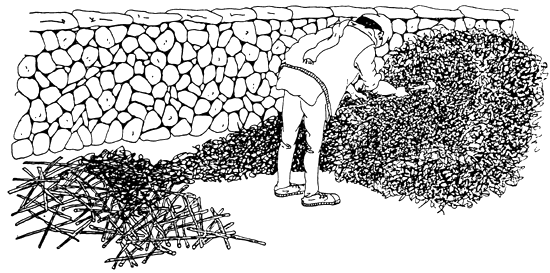
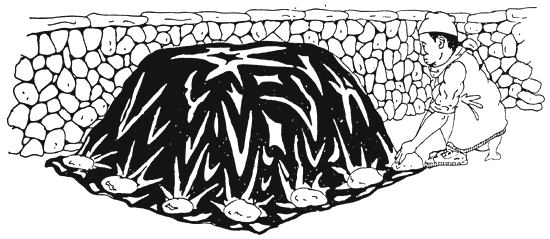
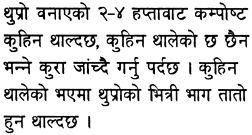 | After about 2–4 weeks check to see if the compost is rotting. If it is it should be getting warm inside the heap. |
 | If it is warm inside turn the heap over onto more sticks or stones. |
| Recover it with the plastic....... |
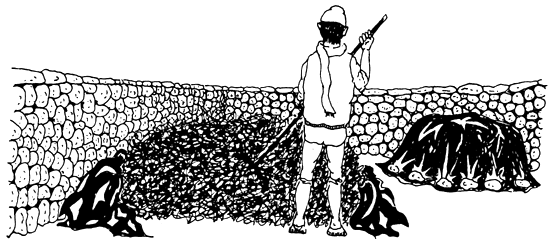

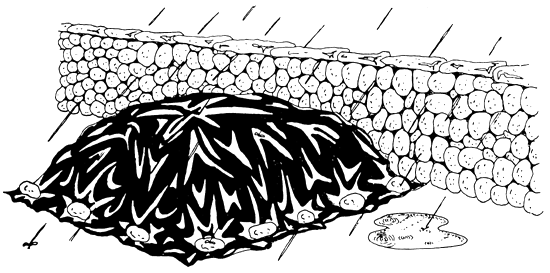
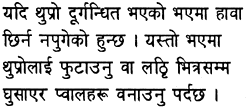 | If it is not warm it means that the compost is not rotting. This may be because of several reasons: |
 | If the heap smells bad there is not enough air getting in. Break up the heap or push sticks into it and move them back and forth to open up holes into the middle of it: |
 | If it is too dry, sprinkle the heap with a little water or diluted urine. |
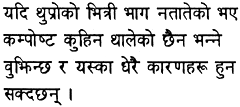 | If the heap is too wet, spread it out slightly to allow it to dry and make sure it is always covered when it rains. |
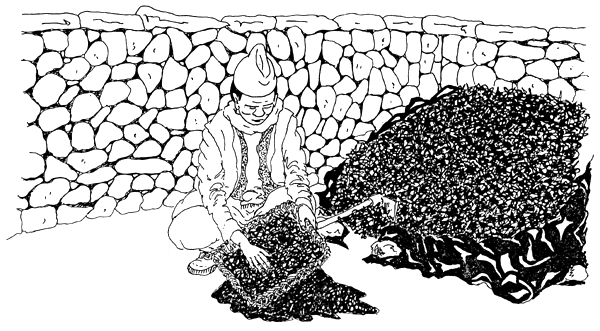
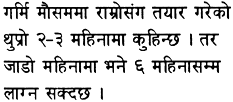 | If the weather is warm and the heap is well made it should rot in about 2–3 months. If it is cold it can take up to 6 months. |
| Compost should be sieved before it is used, to remove anything that has not rotted. |
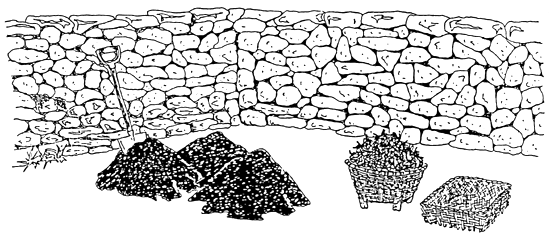

 | 1.4 MIXING SOILS |
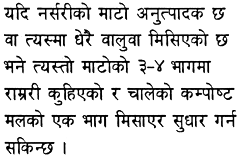 | If the soil for the nursery has too much sand in it or is infertile adding 1 part of well rotted, sieved compost to every 3 or 4 parts of soil will improve it. |
 | If there is too much clay in the soil, but it is fertile enough, then add 1 or 2 parts of clean, seived sand to every 3 or 4 parts of soil. |

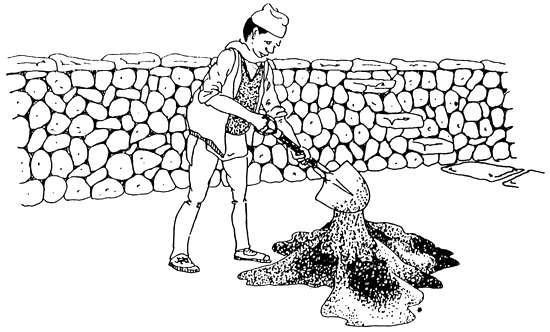
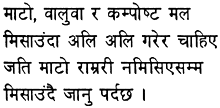 | Soil, sand and compost should be mixed by piling up alternatively small quantities of each in the desired proportions. Gradually build the pile up until there is as much soil mixed as you want. |
 | Mix the soil as well as possible. |
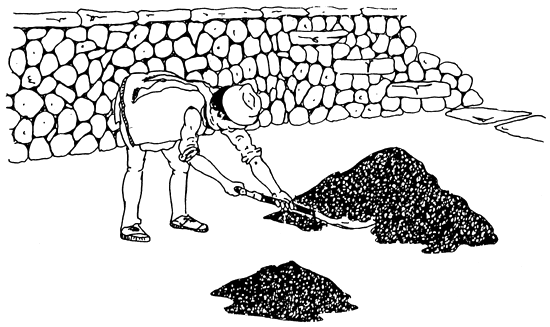

 | Turn the pile of soil to make a new pile next to the first. |
 | This mixes the soil very well. Mix and turn the soil 3 or 4 times. |
 | All soil and sand should be kept under shelter in a soil shed out of the rain and the sun. |
